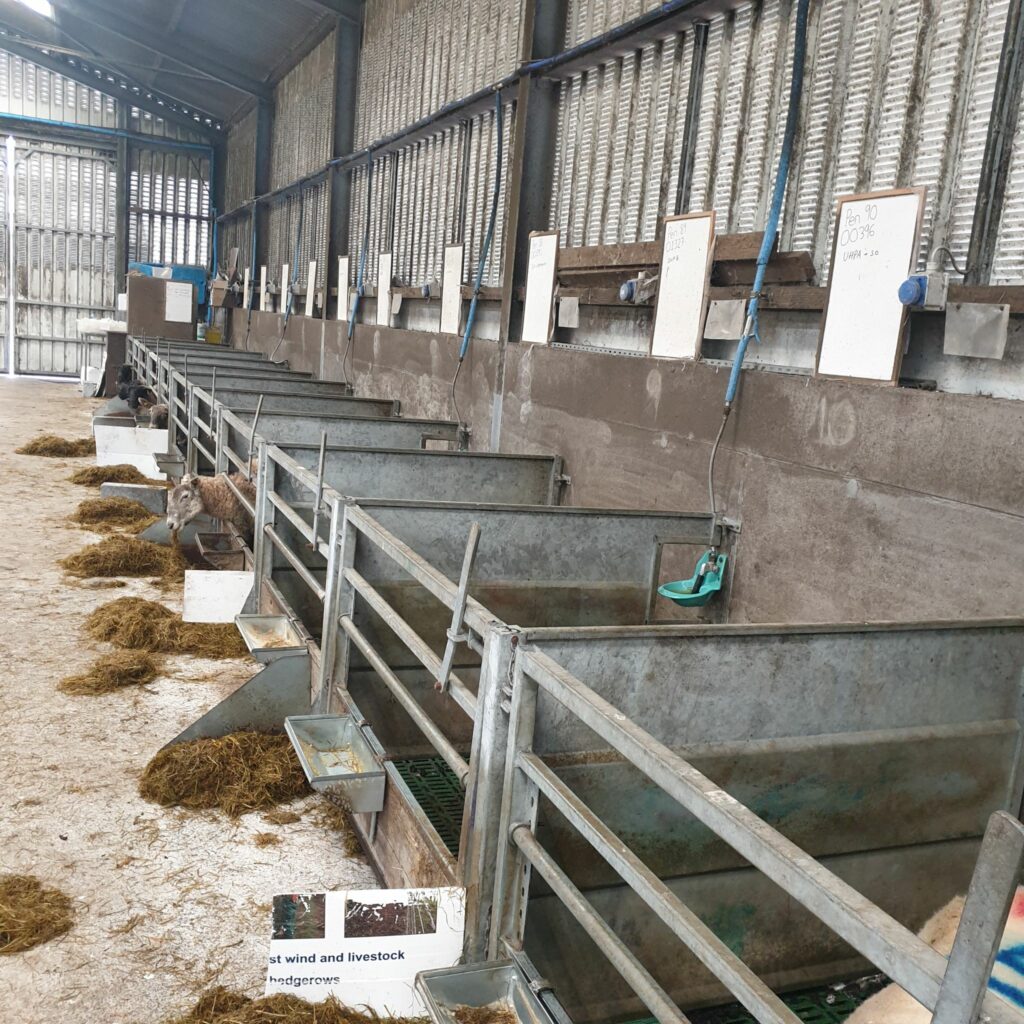
Last week, I got to visit Teagasc in Athenry, County Galway, as part of my research project, which is to contribute to the METH-ABATE project. Emily, a current PhD student, showed us the ongoing work being done here and the details of the trial which is part of the METH-ABATE project. The trial’s duration is 16 weeks. The aim of this trial is to evaluate the effect of promising feed additives from a previous in vitro trial, on methane emissions, production variables and the rumen microbiome in sheep. Below shows the various treatments used during the trial and the differences between treatments in the 2 phases of the trial.
| Treatment | % inclusion | Daily DMI (g DM) | Daily additive inclusion (g) |
| Control | 0 | 1500 | 0 |
| Mootral | 1 | 1500 | 15 |
| Agolin | 0.013 | 1500 | 0.2 |
| Seaweed K | 2 | 1500 | 30 |
| Extract F | 4 | 1500 | 60 |
| UHP A (0.5X) | 0.157 | 1500 | 2.355 |
| UHP B (1X) | 0.313 | 1500 | 4.695 |
| Treatment | % inclusion | Daily DMI (g DM) | Daily additive inclusion (g) |
| Control | 0 | 1500 | 0 |
| Soya Oil (SO) | 4 | 1500 | 60 |
| Extract F | 4 | 1500 | 60 |
| UHP A (2X) | 0.626 | 1500 | 9.39 |
| UHP B (4X) | 1.252 | 1500 | 18.78 |
| UHP A + SO | 0.626 + 4 | 1500 | 2.355 + 60 |
| Extract F + SO | 4 + 4 | 1500 | 60 + 60 |
The study consists of 140 sheep, with 20 sheep randomly assigned to each treatment. The feed intake of the sheep are measured and recorded daily. The image below shows the portable accumulation chambers (PAC) used for measuring the emissions from the sheep during the trial. It is a mobile unit which consists of 12 individual chambers. The unit is also used for measuring emissions from flocks of sheep on different farms across the country.
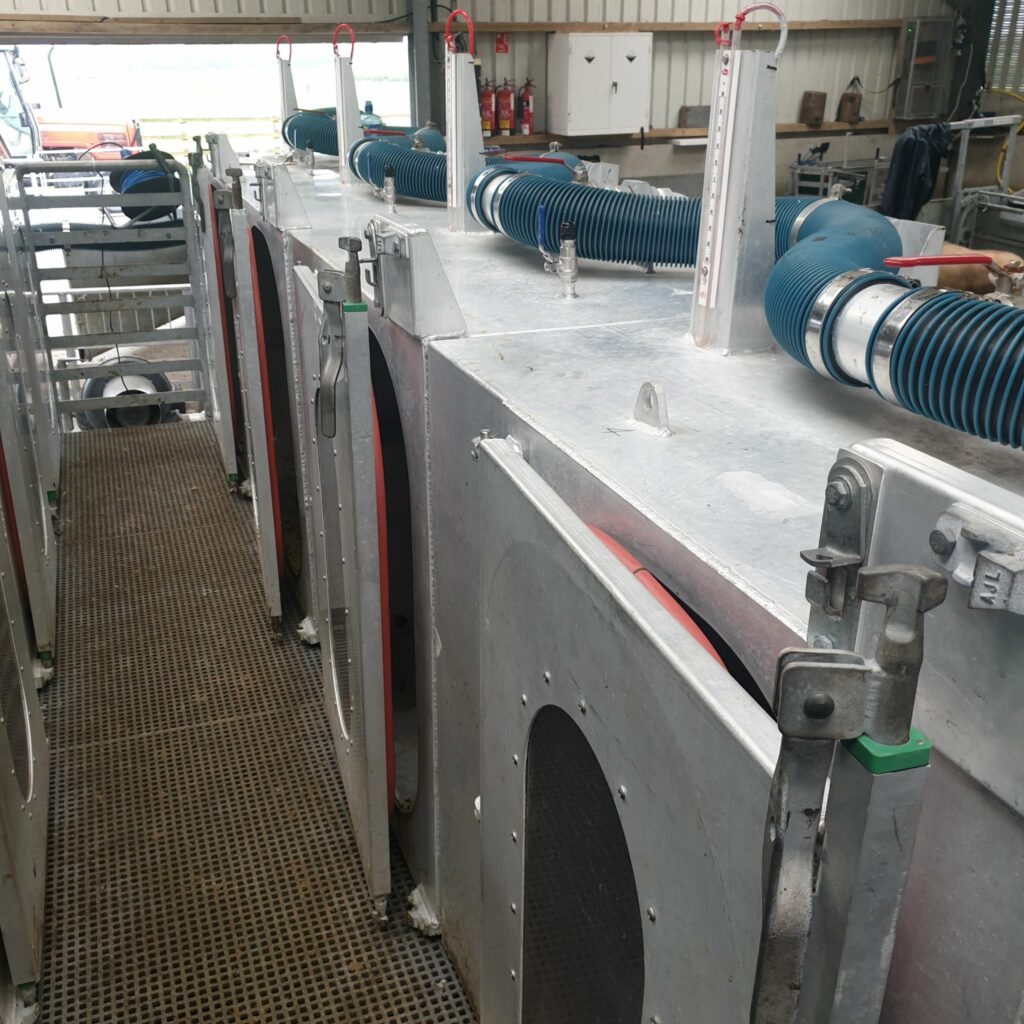
Then the sheep are placed in the PAC as seen above and their methane output is measured. The ewes are kept in the PAC for 50 minutes and readings of the methane produced during this time are recorded at 25 minutes and 50 minutes using an electronic device seen below. This device shows the amount of methane, oxygen, and carbon dioxide in the chamber.
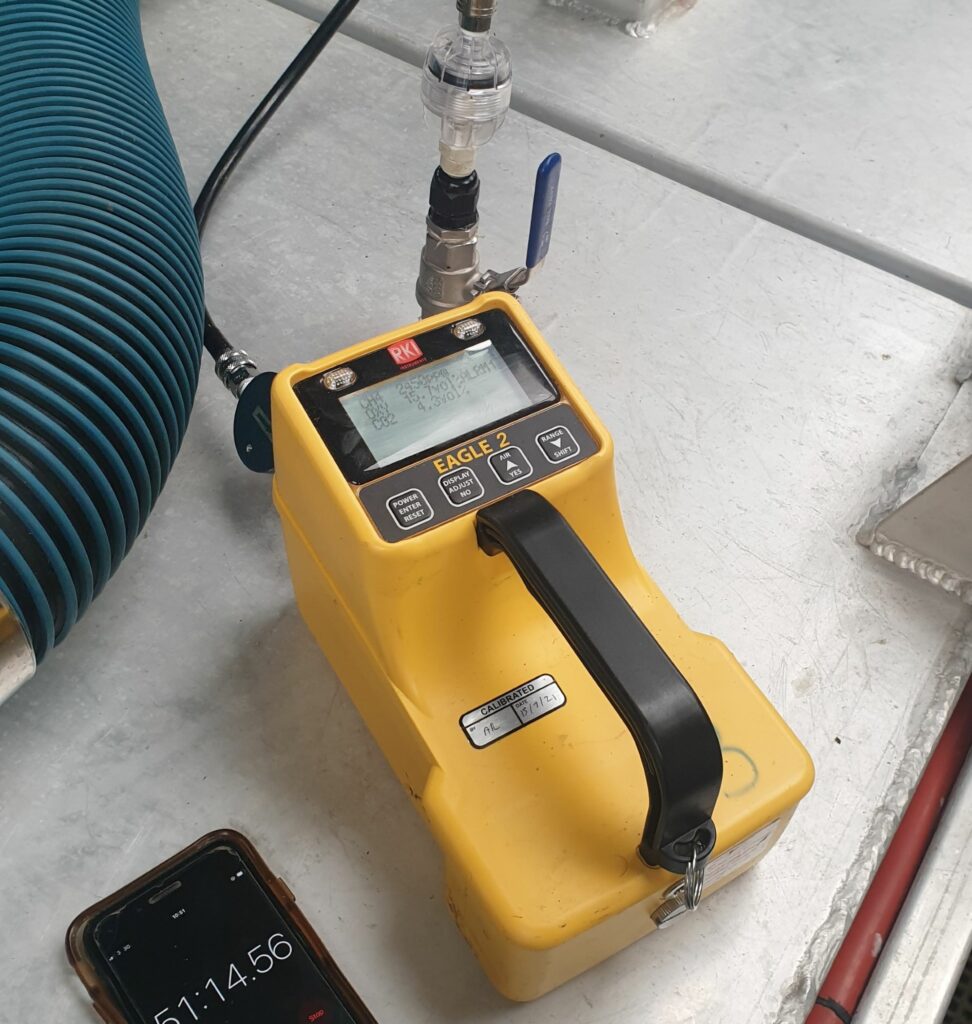
The data gathered on each animal is then stored on this device below. This data is then easily accesible and transferable online so that the user can analysed the data at a later stage.
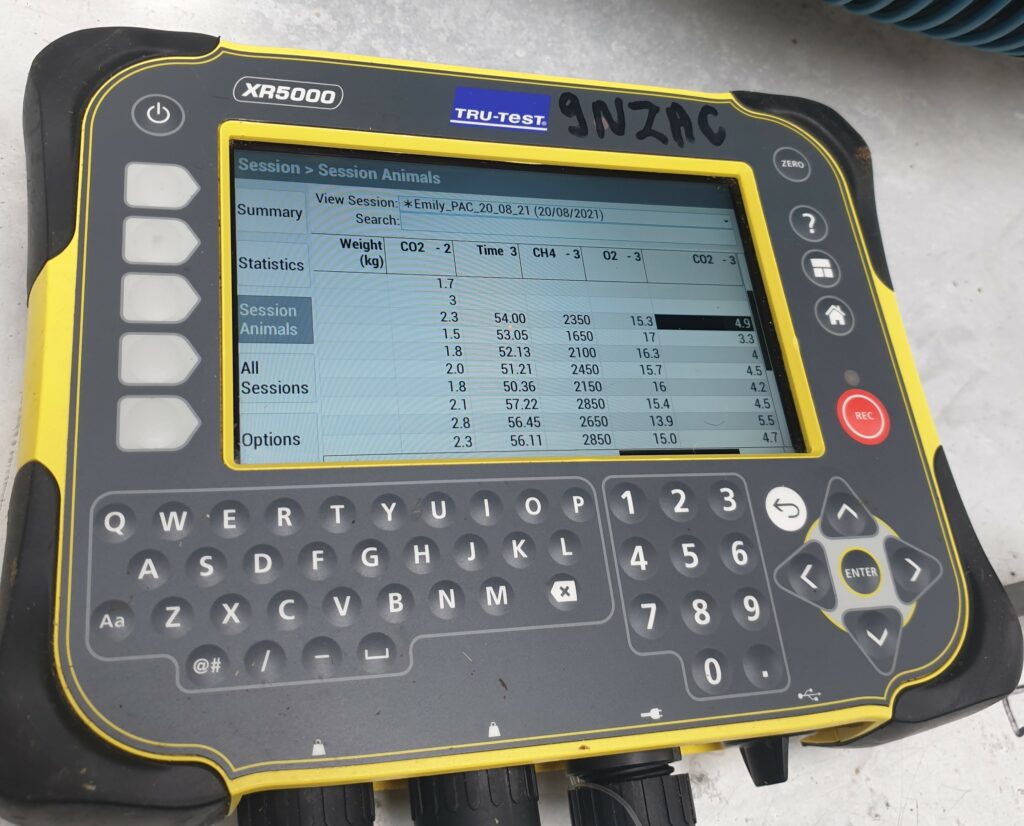
All sheep are fed 3 hours before entering the PAC unit. They are then weighed using the electronic scales below, before entering the PAC and this information is stored in the device above. This data is used along with daily feed intake data for each animal to equate the methane emissions produced.
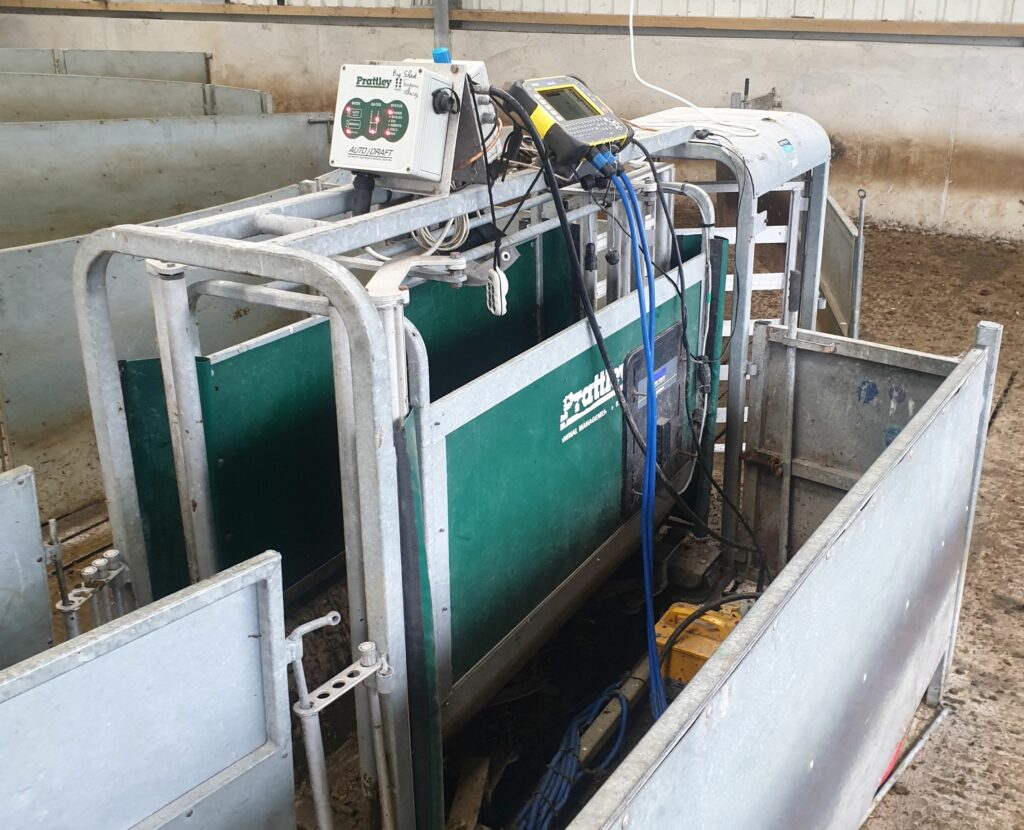
It was a very insightful visit to the research farm, as it showed me the innovative studies aimed at reducing methane from livestock which are ongoing. The PAC unit being used is a novel approach to measuring emissions from livestock in Ireland. It is providing researchers with valuable information on the types of diets which will be best for reducing methane from sheep.